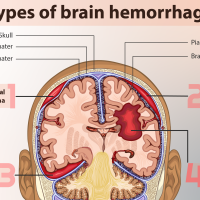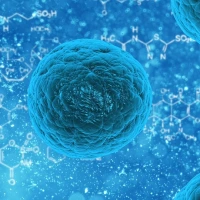In this quick easy lesson, we explain the differences between autocrine, paracrine, juxtacrine, and endocrine signaling, the functions of these types of intercellular signaling, examples of autocrine, paracrine, juxtacrine, and endocrine, as well as mnemonic tips to learn them easily. Let’s go!

What are the differences between autocrine, paracrine, and endocrine signaling?
Autocrine Vs Paracrine Vs Endocrine Vs Juxtacrine

1. Autocrine Signaling and Autocrine Hormones:
Autocrine signaling is self-signaling, where a single signaling cell releases and receives a hormone signal to itself. Autocrine signaling can also be seen in a group. The cells must be identical adjacent signaling cells, and each cell receive a strong autocrine signal, which amplifies the signaling. Please note that cells in autocrine signaling are identical types.
Mnemonic Memory Learning Aid: Autocrine = Self

2. Paracrine Signaling and Paracrine Hormones
Paracrine signaling is “near” signaling. Paracrine signaling cells secrete local mediators that affect surrounding cells in the direct immediate environment. Paracrine is local, so signaling molecules are destroyed rapidly if not taken up by the local target cells.
Examples of Paracrine Signaling are blood clotting factors and nitric oxide. This makes sense because we only want blood clotting factors to heal a cut at the local site and not travel to other sites in the body that don’t need it.
Nitric oxide is another example of paracrine signaling molecule. Acetylcholine is released by activated nerve terminals in blood vessel walls. Endothelial cells lining the blood vessels take up the acetylcholine, which activate Nitric Oxide synthase. Nitric oxide synthase catalyzes the reaction of arginine to nitric oxide, released across the membranes. Paracrine signaling occurs here with nitric oxide diffusing out of the endothelial cells and entering the smooth muscle cells, which activates guanylyl cyclase to make cyclic GMP or cGMP. As a result of this paracrine signaling, the cGMP activates rapid relaxation in the smooth muscle, enhancing blood flow.

Main Takeaway: Nitric Oxide = Example of Pracrine Signaling
Nitric Oxide’s Function: Acetylcholine Released from Nerves –> Activates Nitric Oxide Synthase –> Nitric Oxide Released from Endothelial Cells (Start of Paracrine Signaling) –> Diffuse into Smooth Muscles –> Activates Guanylyl Cyclase to Relax Smooth Muscle –> Increase in Blood Flow
Paracrine Signaling can also occur via Gap junctions
In Paracrine signaling, signaling can occur via gap junctions made up of connexin proteins. This serves as communication channel among adjacent local cells. A good example of paracrine signaling via gap junctions is the motility of peristalsis as food bolus flows down the esophagus.
Mnemonic Memory Learning Aid: Para= close by = Local Signaling

3. Endocrine Signaling and Endocrine Hormones
Unlike autocrine and paracrine hormones, endocrine hormones are secreted into the blood stream and act on distant target cells, not self or local cells. Endocrine signaling, in comparison to autocrine and paracrine, is also relatively slower because it relies on blood flow.
Examples of endocrine signaling include estrogen and testosterone.
Mnemonic Memory Learning Aid: Endo = Internal = Goes to Internal Organs through the BLOOD

4. What is the difference between paracrine and juxtacrine signaling? Paracrine vs Juxtacrine
Paracrine vs Junxtacrine Signals: Paracrine signals are released locally and diffuse to act on nearby tissues and cells. Juxtacrine similarly to paracrine signals also acts on nearby tissues and cells, but the main difference in juxtacrine signalling is that cells releasing juxtacrine signals REQUIRE physical contact with the cell that they are acting upon.
Juxtacrine = NEEDS Physical Contact between cell and cell (Example: Notch and Delta during embryogenesis)

Summary of Differences between Autocrine, Paracrine, and Endocrine Hormones/Signaling
There are two main differences between autocrine, paracrine, and endocrine signaling: location and speed.
In terms of location: Autocrine is self. Paracrine is local. Endocrine generally affects cells farther away, more distantly.
In terms of speed: Autocrine is fastest. Paracrine is fast. Endocrine is relatively slow compared to autocrine and paracrine signaling.
Copyright 2019 Moosmosis: All Rights Reserved
Please Like our Facebook page to support our open-access youth education initiatives! 🙂















Hope you liked our educational post, everyone!
LikeLiked by 2 people
Love it!! Handsome article ;D
LikeLiked by 1 person
Excellent post on autocrine vs paracrine vs endocrine!! And really helpful too! 😀
LikeLiked by 2 people
This post is gold! Thanks for sharing
LikeLiked by 1 person
An absolutely wonderful (and very visually appealing) post!
LikeLiked by 1 person
Perfect timing for my class and perfect abs too!😍❤️ Just started the endocrine unit. Thanks for sharing your awesome article!
LikeLiked by 2 people
Thank you kind sir/madam for sharing this. This is just what I need. Succinct notes and easy to understand.
LikeLiked by 2 people
A WOW article!
LikeLike
Helpful article!! Handsome too 😍
LikeLike
Definitely got my attention!…and learned something too!
LikeLiked by 2 people
Thank you, Dr. Laaravan! Glad you enjoyed our article. 🙂
LikeLiked by 1 person
Excellent essay on endocrine vs paracrine vs autocrine hormones! It’s really helpful!
LikeLiked by 1 person
What a gem of an article! Very helpful information! Thank you
LikeLiked by 1 person
Thank you Lilian! That’s very nice of you 🙂 so glad to hear!!
LikeLike
Very simplified. thanks alot for this 🙏🏼
LikeLiked by 2 people
You’re very welcome, Olivia! We’re so glad this helped! 😀 Happy learning!
LikeLiked by 1 person